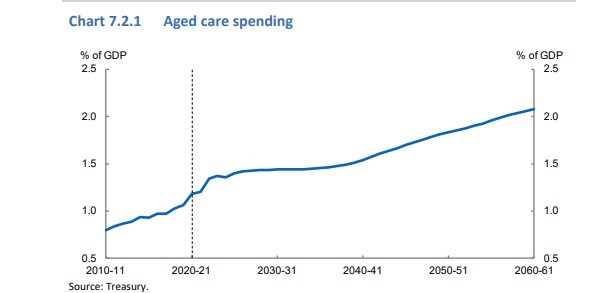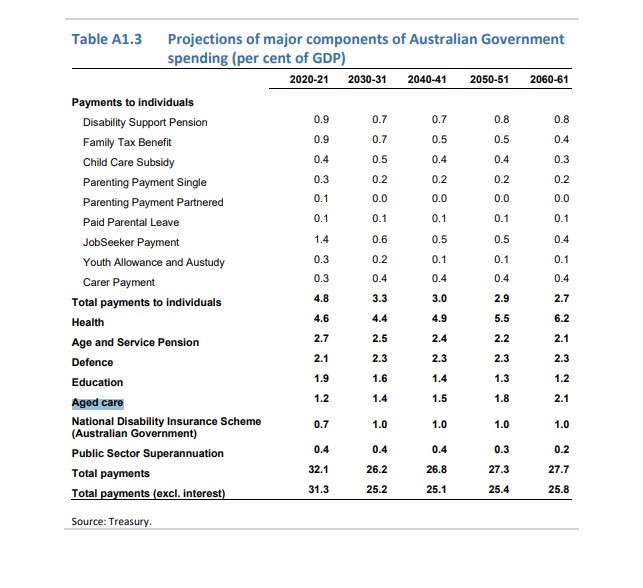 The Intergenerational Report 2021, a long-range look at the impacts of population and government policy on the Federal Budget over the next 40 years, state health and the aged care sector will be the fastest growing areas of spending in the next four decades.
The Intergenerational Report 2021, a long-range look at the impacts of population and government policy on the Federal Budget over the next 40 years, state health and the aged care sector will be the fastest growing areas of spending in the next four decades.
Health, which accounted for 19% of the Budget in 2021/22, will be the single largest component of spending, snapping up 26% per cent of spending in 2060-61, and taking the mantle from social security. In other words, health spending will rise from $3,250 per person in 2018-2019, to $3,970 in 2031-32 and then up to $8,700 in 2060-61.
 Aged care spending is projected to nearly double as a share of the economy by 2060-61, largely due to the ageing population, from 1.2% of Gross Domestic Product now to 2.1%, by 2060-61, according to the report.
Aged care spending is projected to nearly double as a share of the economy by 2060-61, largely due to the ageing population, from 1.2% of Gross Domestic Product now to 2.1%, by 2060-61, according to the report.
Dementia will overtake heart disease as Australia’s leading cause of death and “present one of Australia’s most pressing health challenges”.
In 2018-19, the Australian Government funded around 80% of total aged care spending, with user contributions largely making up the remaining 20%. Its spending on aged care has increased by over 40% in real terms since 2012-13. By 2023-24, the Australian Government’s spending on aged care is expected to be around $4.5 billion higher per year as a result of the reforms (an increase of around 17%).
There is no mention of the Aged Care Royal Commission’s recommendation for a tax-based levy to bolster funding in the report, and the Morrison Government has ruled it out, yet it has wide public support and is such spending sustainable?










